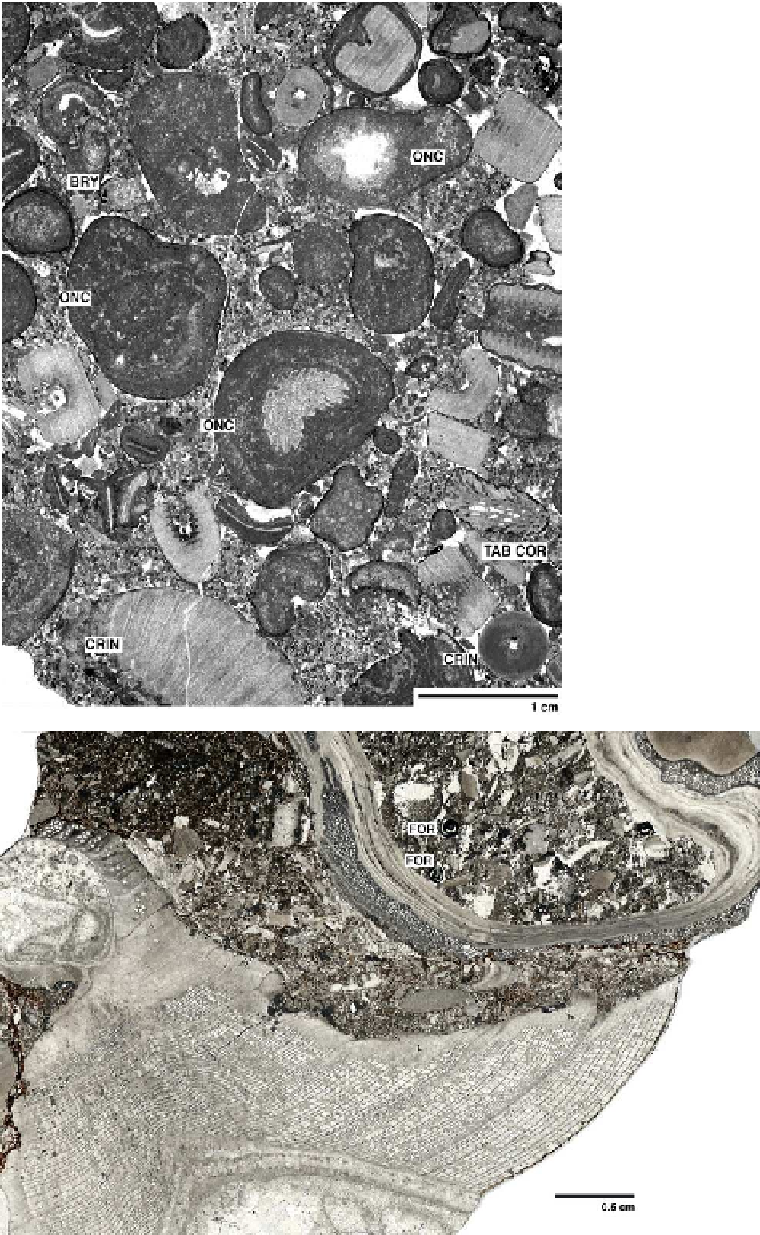Geology Reference
In-Depth Information
Fig. 20.8.
Rudstone with reworked oncoids,
intraclasts, and bioclasts. Bioclasts are repre-
sented by fragments of crinoid stems, tabulate
corals, bryozoans, and brachiopods. Different
types and stages of encrustations are present.
Some of the crinoids exhibit only a very thin
crust, whereas the large oncoid with the frag-
ment of a ramiform tabulate coral in the center
of the picture shows a thick crust formed by
concentrically arranged faint cyanobacterial
layers. The small components in the grainstone
matrix are mostly crinoid fragments and peloids,
the latter mostly resulting from complete mi-
critization of small bioclasts. In this sample,
components of a backreef facies (oncoids) are
mixed with remnants from organisms which
lived in reef-related environments (crinoids,
ramiform tabulate corals). Silurian (Ludlow):
Gotland, Sweden.
BRY - Bryozoans, CRIN - Crinoids, mainly
stems, ONC - Oncoids, TAB COR - Tabulate
coral
Fig. 20.9.
Poorly sorted, Late
Cretaceous reef debris limestone
(SMF 5) with large fragments of (1)
of a radiolitid rudist (reef-building
bivalves) with typical meshwork
and (2) of an oyster (upper right
corner) with laminar and vesicular
shell layers both (rudstone with
packstone matrix). Rudists exhibit
a fast growth rate because they probably housed algal symbionts, and formed abundant reef-like structures in the Tethyan
realm. The shell is thick, but porous, and has an outer calcitic and an inner aragonitic (usually recrystallized) layer. The
poorly washed matrix contains abundant fragments of bivalves and echinoderms, benthonic foraminifera (e.g. the miliolid
Quinqueloculina
), and peloids. Late Cretaceous, Coniacian: Lattengebirge, Northern Calcareous Alps.
FOR - Miliolid foraminifera

